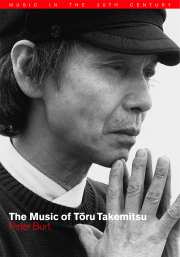Book contents
- Frontmatter
- Contents
- Acknowledgements
- Note on conventions
- Introduction
- 1 Pre-history: how Western music came to Japan
- 2 Music and ‘pre-music’: Takemitsu's early years
- 3 Experimental workshop: the years of Jikken Kōbō
- 4 The Requiem and its reception
- 5 Projections on to a Western mirror
- 6 ‘Cage shock’ and after
- 7 Projections on to an Eastern mirror
- 8 Modernist apogee: the early 1970s
- 9 Descent into the pentagonal garden
- 10 Towards the sea of tonality: the works of the 1980s
- 11 Beyond the far calls: the final years
- 12 Swimming in the ocean that has no West or East
- Notes
- List of Takemitsu's Works
- Select bibliography
- Index
- Frontmatter
- Contents
- Acknowledgements
- Note on conventions
- Introduction
- 1 Pre-history: how Western music came to Japan
- 2 Music and ‘pre-music’: Takemitsu's early years
- 3 Experimental workshop: the years of Jikken Kōbō
- 4 The Requiem and its reception
- 5 Projections on to a Western mirror
- 6 ‘Cage shock’ and after
- 7 Projections on to an Eastern mirror
- 8 Modernist apogee: the early 1970s
- 9 Descent into the pentagonal garden
- 10 Towards the sea of tonality: the works of the 1980s
- 11 Beyond the far calls: the final years
- 12 Swimming in the ocean that has no West or East
- Notes
- List of Takemitsu's Works
- Select bibliography
- Index
Summary
The title of this book is ‘The Music of Tōru Takemitsu’, and despite the many other fascinating issues, biographical and artistic, that it is tempting to explore in an examination of this many-faceted genius – composer, festival organiser, writer on aesthetics, author of detective novels, celebrity chef on Japanese TV – it is with Takemitsu's legacy as a composer that the following chapters are predominantly concerned. In fact, the book's scope is even narrower still, for although Takemitsu, as the worklist at the end of this volume will show, produced a vast amount of music for film, theatre, television and radio as well as a number of other pieces of more ‘populist’ character, such works lie beyond the remit of the present study, which for the most part deals only with the composer's ‘classical’ scores for the concert platform. Right from the start, however, it should be emphasised that such an approach focuses on only a small area of Takemitsu's versatile creativity, and it should always be borne in mind that these other areas of activity were an ever-present backdrop to his ‘mainstream’ work, interacting fruitfully with the latter in ways which it has been possible to hint at in the following pages, but – regretfully – not examine in more detail.
The bulk of this work, then – chapters 2 to 11 – is concerned with descriptions of Takemitsu's music for the concert room, examining the principal scores in roughly chronological sequence, and including a certain amount of biographical information to set them in context.
- Type
- Chapter
- Information
- The Music of Toru Takemitsu , pp. 1 - 3Publisher: Cambridge University PressPrint publication year: 2001

